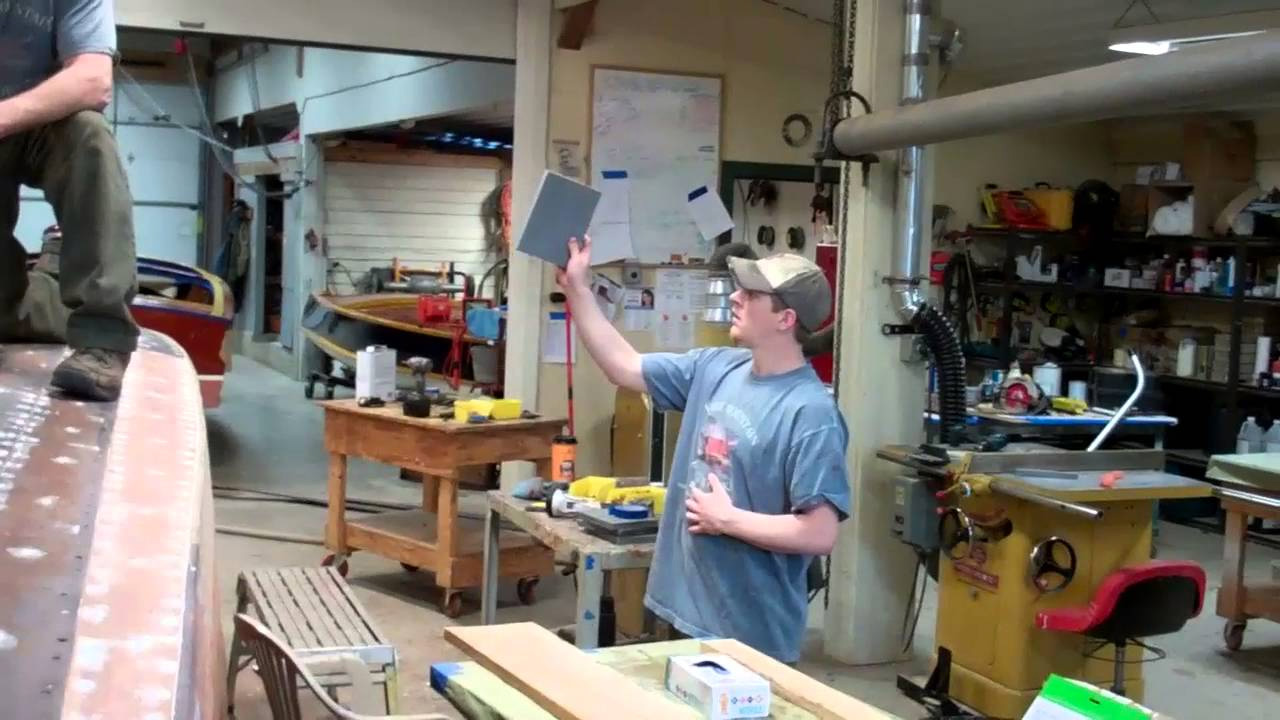The port face of my 1953 22’ Shepherd Model 110-S Sportsman is one plank course shy of being fully planked.
We had installed the last of the first five courses, complete with a new aft chine plank, yesterday. And I had previously packed the countersinks in the first two courses with two applications of 3M Premium Marine Filler.
The butt joints between planks should never land on a rib. Doing so permits a single course of fasteners driven through the last about 3/4″ of each plank, which can tear out over time.
Landing them between the ribs and onto a 3/4″ marine plywood block permits driving three courses of silicon bronze wood screws through the plank. (Each block is coated in 5200 prior to its positioning so that screws can be driven through the planks and into it.)
We know that each plank has been sufficiently slathered with 3M 5200, when it bleeds out through the seams and countersinks as we screw it down. Cleaning the seams and especially the countersinks is therefore a vitally important step in the process.
We clean the countersinks with a terrycloth rag soaked in Interlux 333 brushing liquid and a small flat blade screwdriver. Especially above the waterline where they will be bunged, the countersinks must be akin to surgically clean.
We wipe the seams and plank surfaces with a terrycloth rag, being sure that the surface of the 5200 in the seams is slightly concave and below the plane of the planks themselves. Leaving it flush with, or what is infinitely worse, proud of the planks adds special challenges to the flatboard sanding that follows once the 5200 is cured.
Folks have emailed me wondering if what they see in the clips is correct, that we are using white 5200. Why? Cost is the driver here. I have kept count, and thus far we used 18 tubes, installing the plywood inner skin, and an additional 33 tubes installing the first five port-side courses – just over 6 per course – of bottom planks. If we stay on course and use 6 more for the final course, the port-side planks alone will have “cost” us 39 tubes, and we will have used upwards of 80 total once the starboard face is planked, and almost 100 tubes including installing the plywood.
Mahogany 5200 cures in about half the time required by the white alternative, but it also costs between $20 and $23 per tube, depending when you buy it. White 5200 runs between $12 and $14 per tube.
The approximately $8 differential between mahogany and white adds about $800 in material costs for an application in which the 5200 all but disappears. (We do use mahogany for the forward ends of the planks that land above the waterline and will therefore be finished bright.)
Yes, there is push out along the bilge framing when the plywood is installed, which we clean, leaving a very faint white line along the seam between frame members and the plywood.
The entire bilge will be coated with multiple coats of bilge paint, which, if the seams have been cleaned properly, should render them invisible.
of which hide the seams nicely. And, any adhesion failure at these seams remains largely invisible, especially in the case of the gray bilge paint.
Chris-Craft, however, used Chris-Craft red bilge paint. In such cases we offer owners the option of using mahogany 5200 for installing the plywood. The two colors are very, very close, and doing so avoids the contrast between the C-C bilge red and the white 5200.
On to the starboard face…

